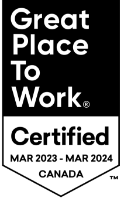
Article
Pricing Strategy Amid an Ever-Changing Market
Jordan Shapiro, Evin Demirli, Erika Siegert — March 23, 2023
So, why is a well-defined Pricing Strategy important?
A price tag holds substantial weight. As it is often the final purchase decision factor, and a contributor to brand perception, price requires a thoughtful strategy behind it.
A well-defined Pricing Strategy determines the optimal approach to pricing your organization’s product or service, not only to maximize value and profit, but to drive desired consumer behaviour.
At Level5, we partner with our clients to design optimal Pricing Strategies that meet their unique needs, through two lenses:
- External Factors: Understanding how external influences impact delivery against consumer expectations, ranging from market trends to competitive alternatives.
- Internal Factors: Optimizing and aligning internal factors, such as your margin philosophy and operational costs, with your value proposition, desired brand positioning, and delivered customer experience.
In today’s fast-paced and dynamic landscape, these factors shift constantly and should always be considered in strategic decision-making.
Key questions to ask when accounting for external factors
1) What is the market telling you?
Macro-economic and industry trends have the power to significantly shift consumer expectations. As economic landscapes fluctuate, there are subsequent impacts to supply and demand, and willingness to pay. For example, trends emerging from the pandemic prompted a need for pricing adjustments in the entertainment space. Movie prices have now shifted to a premium due to slow returning demand and changing consumer entertainment priorities. This change has influenced shifts in pricing, like charging more for better seats, creating entirely new pricing models (e.g., memberships) or dynamically adjusting prices based on how many people want to see a movie.
To remain competitive as industries evolve and products or services are revolutionized, pricing approaches must also evolve to match. For example, in order to compete when Amazon redefined e-commerce speed, convenience, and selection, organizations had to look critically at their own pricing and margin approaches to meet changing consumer expectations.
2) What do your competitors offer?
Consumers have endless options. At the end of the day, price is a means for organizations to signal their brand promise to the market and value proposition relative to alternatives. The degree of competition is also correlated to a brand’s pricing power in the market. Where highly competitive commoditized markets result in lower pricing power, those who create their own market have much more power when setting prices.
For example, Ticketmaster’s ability to charge sky-high prices hinges on the fact that they ARE the ticket market – though there are clear brand risks they are engaged in. However, Tesla discounting their product not only signalled erosion of their brand promise, but also prompted a sector-wide price war.
3) Where do you have permission?
It is human nature to compare – and now, more than ever, consumers have access to no shortage of data when making purchase decisions, including pricing. Consumer expectations are shaped by the economy, market trends, and the availability of alternatives. If pricing changes are not within their range of expectation, willingness-to-pay will fade. Understanding this relationship allows organizations to leverage pricing as a more effective lever to drive customer satisfaction.
For example, Lululemon has established itself as a lifestyle brand and consistently delivers on a unique promise to loyal customers. This loyalty gave permission for Lululemon to introduce moderate price increases, a shift that was well-received as it demonstrated an enhanced promise of innovation in the market.
Delivering on your customer experience through internal factors
With the broader context of the external environment considered, organizations must also consider several internal elements of their business to ensure their pricing strategy is designed to build a strong, competitive brand and cement customer loyalty.

Together, these internal choices ladder up to delivering desired value to your customers, backed by an optimal Pricing Strategy. When these internal factors are not aligned, brands are at risk of irreversible damage to perception and customer loyalty.
For example, in 2022, Netflix saw its first subscriber loss in over a decade. The streaming giant lost 200,000 subscribers during Q1 of 2022 and has recently rolled out paid sharing this quarter in Canada.
While Netflix is changing its pricing structure to remain profitable, they are significantly impacting the experience of families who do not have a traditional single household. Their new strategy has deteriorated a core component of the Netflix value proposition: easily accessible entertainment. Many Canadians were outraged with the introduction of additional fees for password sharing, stating that they would consider cancelling the service all together as a result. A lack of strategic alignment between their enduring value proposition, margin ambitions and operational implications could result in a reversal of long-standing customer loyalty they’ve previously established.
Bringing it all together: How to uncover optimal price positioning for your organization
Amid an ever-changing market and exorbitant consumer expectations, navigating loyalty while maintaining your brand promise can be challenging. A strong understanding of consumer perceptions in the market, your point of difference against competitors, and how well-aligned and equipped your organization is to deliver the desired price point will help establish a strong, competitive brand and deep-rooted customer loyalty.
Taking the steps to answer key strategic pricing decisions will help your brand keep its promises and drive profitable growth.
To uncover the optimal price positioning for your organization, reach out to Jordan Shapiro, Evin Demirli, or Erika Siegert.




